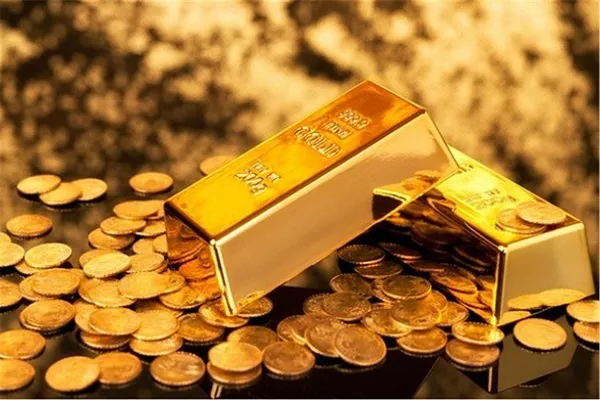In a remarkable turn of events, gold prices have soared to unprecedented levels, with the precious metal breaking records on a near-weekly basis. The surge has sparked discussions among analysts and investors about the factors driving this modern-day gold rush.
Unprecedented Gains in Gold Prices
Last week, the price of bulk gold—commonly referred to as bullion—exceeded $2,700 per ounce for the first time in history. This milestone marks a staggering 31 percent increase in gold’s value since the beginning of the year. Analysts are closely monitoring this trend, as gold has emerged as one of the best-performing assets of 2023.
Henry Jennings, a senior markets analyst at Marcus Today, expressed astonishment at the current situation. “It is a bit nuts, I have to say,” he remarked, emphasizing the meteoric rise of gold prices. “It’s certainly been one of the best performing assets this year by a long shot.”
The precious metal’s recent peak of $4,000 per ounce signifies a significant gain of nearly one-third this year alone, reflecting a robust demand from investors seeking a safe haven amid economic uncertainty.
Factors Driving the Gold Surge
Several factors contribute to the ongoing gold rush, with geopolitical events in the Middle East playing a pivotal role. The instability in the region has prompted investors to seek refuge in gold, traditionally viewed as a secure asset during times of turmoil.
In addition to geopolitical concerns, central banks worldwide continue to accumulate gold, although purchasing has moderated after an initial surge in demand at the beginning of the year. According to the World Gold Council, central banks experienced “record-breaking” demand earlier this year, highlighting the precious metal’s enduring appeal.
Furthermore, global investors are reportedly hoarding gold in anticipation of the upcoming U.S. presidential election, scheduled for early next month. This uncertainty surrounding the election has fueled concerns about the U.S. economy and its growing deficit, estimated to be between $32 trillion and $33 trillion.
Investors’ Concerns About Economic Stability
“There is also a fear of what’s going to happen,” Jennings stated. “Neither candidate has really addressed the growing U.S. deficit, which is causing alarm among investors.” As a result, gold has gained traction as a perceived safe haven, attracting significant interest from those looking to protect their assets.
The bullish sentiment in the gold market reflects a broader apprehension among investors regarding the state of global financial markets. With rising concerns that equity markets may have become overly optimistic, many are turning to gold for stability.
Optimism in Global Financial Markets
Andrew Hauser, the Deputy Governor of the Reserve Bank of Australia, has voiced his thoughts on the prevailing optimism in financial markets. Speaking at a Commonwealth Bank investor briefing, he remarked that global financial markets are exhibiting “spectacularly optimistic” behavior, particularly within the equity sector.
Hauser’s comments suggest that the prevailing enthusiasm in global financial markets may not be entirely justified. “The probability of a soft economic landing is being oversold throughout the post-COVID period,” he noted. His assessment underscores the need for caution as investors navigate an unpredictable economic landscape.
The Role of Safe-Haven Assets
As the economic landscape remains uncertain, many investors are turning to gold as a protective measure. The notion of gold as a safe haven is well-established, particularly during times of geopolitical unrest or economic instability. The precious metal’s tangible nature and historical significance make it an attractive option for those looking to safeguard their wealth.
Gold’s appeal is further enhanced by its limited supply and inherent value, which can act as a buffer against inflation and currency fluctuations. In times of crisis, the demand for gold often spikes, leading to price increases as investors seek to hedge against potential losses in other asset classes.
Looking Ahead: Market Implications
As gold continues to reach new heights, analysts are keenly observing market trends and investor behavior. The current surge presents both opportunities and challenges for investors. While gold may provide a sense of security, its rising prices could also prompt questions about sustainability and potential corrections in the market.
Investors are encouraged to remain vigilant and consider diversifying their portfolios to mitigate risks associated with market volatility. The interplay between gold prices, geopolitical events, and economic indicators will remain crucial as the year progresses.
Conclusion
The recent surge in gold prices reflects a complex interplay of geopolitical tensions, central bank policies, and investor sentiment. As markets grapple with uncertainty, gold’s status as a safe haven has never been more pronounced. With analysts expressing cautious optimism, it remains to be seen how the market will evolve in the coming months.
As the modern-day gold rush continues, stakeholders must remain informed and adaptable, recognizing both the potential rewards and risks that lie ahead. The dynamics of the gold market will undoubtedly be a focal point for investors, analysts, and policymakers alike in the months to come.
Related topics:

